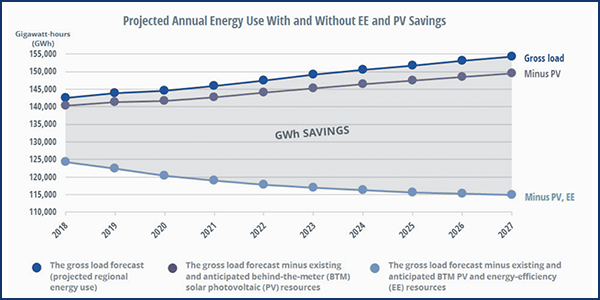By Robert Mullin
Call it a false alarm.
In rejecting a request for a declaratory order on Tuesday, FERC provided the petitioners exactly what they were seeking: assurance that ISO-NE will not alter its energy efficiency performance standards outside the stakeholder process.
In February, Advanced Energy Economy (AEE) and the Sustainable FERC Project petitioned FERC to issue a declaratory order that would prevent ISO-NE from retroactively revising Forward Capacity Auction 13 qualification packages to include new measurement and verification (M&V) standards not previously applied to EE resources. They also asked FERC to clarify that the RTO must seek commission approval to make any such changes. (See Groups Seek to Head off ISO-NE EE Changes.)
In their initial filing, the groups said their petition arose from reports that ISO-NE staff had made a series of phone calls to Forward Capacity Market participants with qualified EE capacity resources. During those calls, staffers said the RTO intended to change how it measures the demand reduction value of EE resources for participation in the FCM.
The petition alleged the changes could include new “net-to-gross” conversion factors to revalue EE resources, meaning the resources could only offer into the FCM their net energy savings, rather than their gross reduction to load from baseline federal standards. The petitioners noted the factors were “never previously required of, nor imposed on, market participants” nor defined or described in the RTO’s Tariff or manuals.
The groups contended ISO-NE staff indicated the RTO would potentially make the changes retroactively and without seeking commission or stakeholder approval, “even though the contemplated changes could significantly change the quantity of the resources that have already qualified for, and cleared, the most recent Forward Capacity Auction, FCA 13.”
The petition garnered widespread support, including from public interest organizations, the Massachusetts attorney general and Eversource, which asked that ISO-NE follow the New England Power Pool stakeholder process before making any changes.
FERC on Tuesday dismissed the petition as “premature,” citing ISO-NE’s own statements in response to the petition and its lack of action on the issue (EL19-43).
“We find that the harm alleged in the petition is speculative in light of ISO-NE’s clarification that it has not made any proposal, nor does it currently have any plans, to change its M&V standards,” the commission wrote. “Furthermore … because ISO-NE has not proposed a change to its M&V standards, there is not concrete proposal for the commission to evaluate to determine whether a Tariff filing is required. As such, there is no controversy or uncertainty necessitating a declaratory finding at this time.”
ISO-NE said it was all a misunderstanding.
“As the script used by an ISO staff member for calls to energy efficiency providers makes clear … the ISO was informing energy efficiency providers that it is in the process of evaluating the implication of potential changes in federal energy efficiency standards and new information regarding net-to-gross savings ratios,” the RTO said in its March 7 initial response to the petition. “The communications do not reflect that the ISO was proposing a practice change or intending to make one.”
The RTO said it was evaluating current M&V practices because expected changes in lighting efficiency standards under section 321 of the Energy Independence and Security Act of 2007 “could substantially affect the baseline against which the savings from efficient lighting programs are determined.”
It also cited “a growing disparity between gross savings and net savings values for energy efficiency resources” reflected in updated state studies on the performance of energy efficiency measures.
“These factors warrant evaluating current practices regarding the measurement of energy savings for energy efficiency resources to assess whether changes to the ISO’s measurement standards are appropriate,” ISO-NE said.
But it said any changes would require modifications to ISO-NE manuals or Tariff and would be done “only after any such changes are vetted through the stakeholder process and any Tariff changes are filed and accepted by the commission.”
The commission’s order included comments reassuring to the petitioners. “In particular, in its second answer [to the petition], ISO-NE committed that it would only implement a gross-to-net savings methodology for determining the capacity value of energy efficiency resources through a Section 205 filing.”
AEE said it was happy with the outcome.
“As the commission states in its order, ISO New England has committed that it will not make changes to the measurement and verification standards for energy efficiency resources without engaging stakeholders and making a filing with FERC,” Jeff Dennis, AEE managing director, said in a statement. “We appreciate this commitment by ISO-NE in its answer to our petition, and the commission’s recognition of it, which brings needed clarity and certainty for energy efficiency resource providers.”





